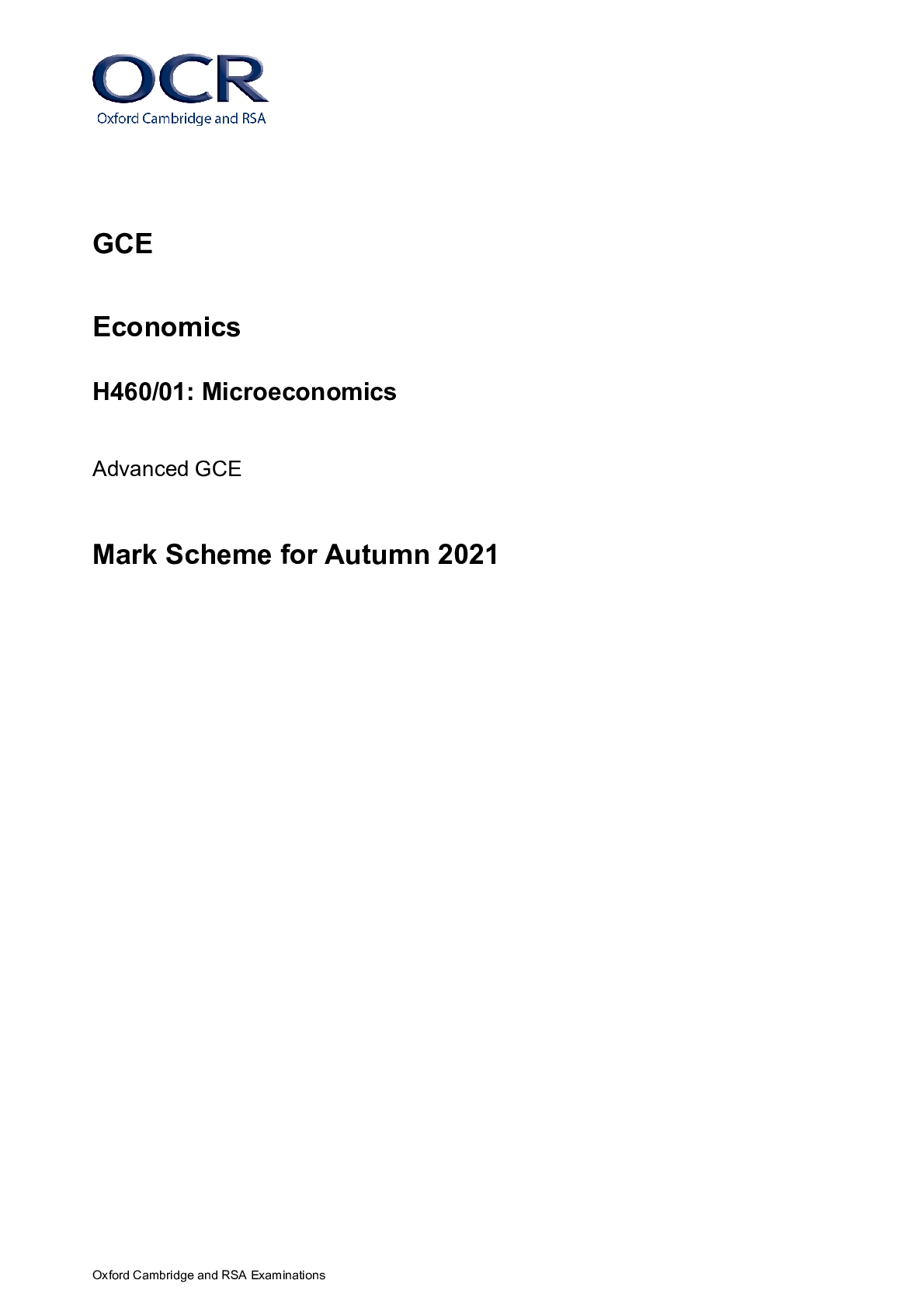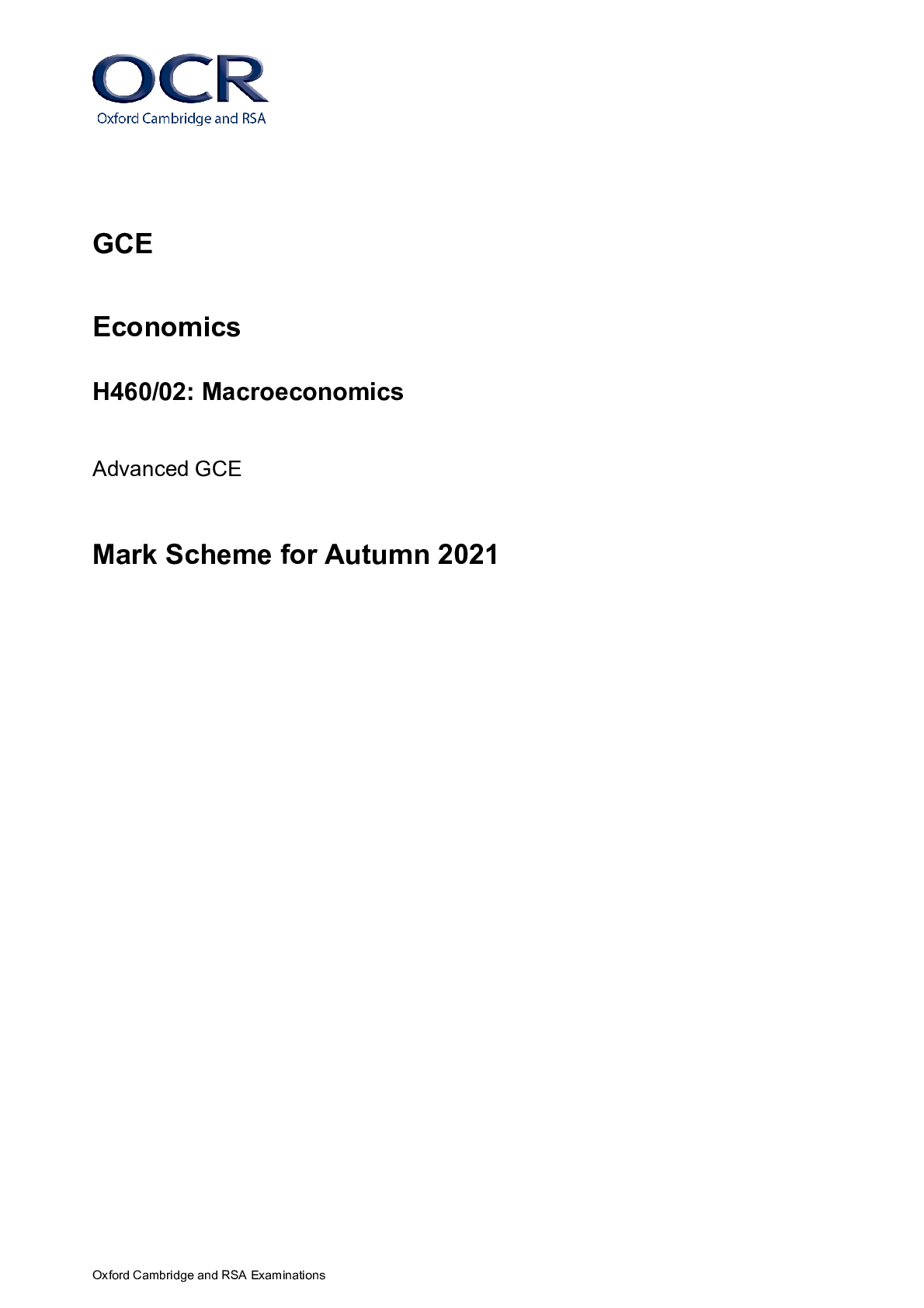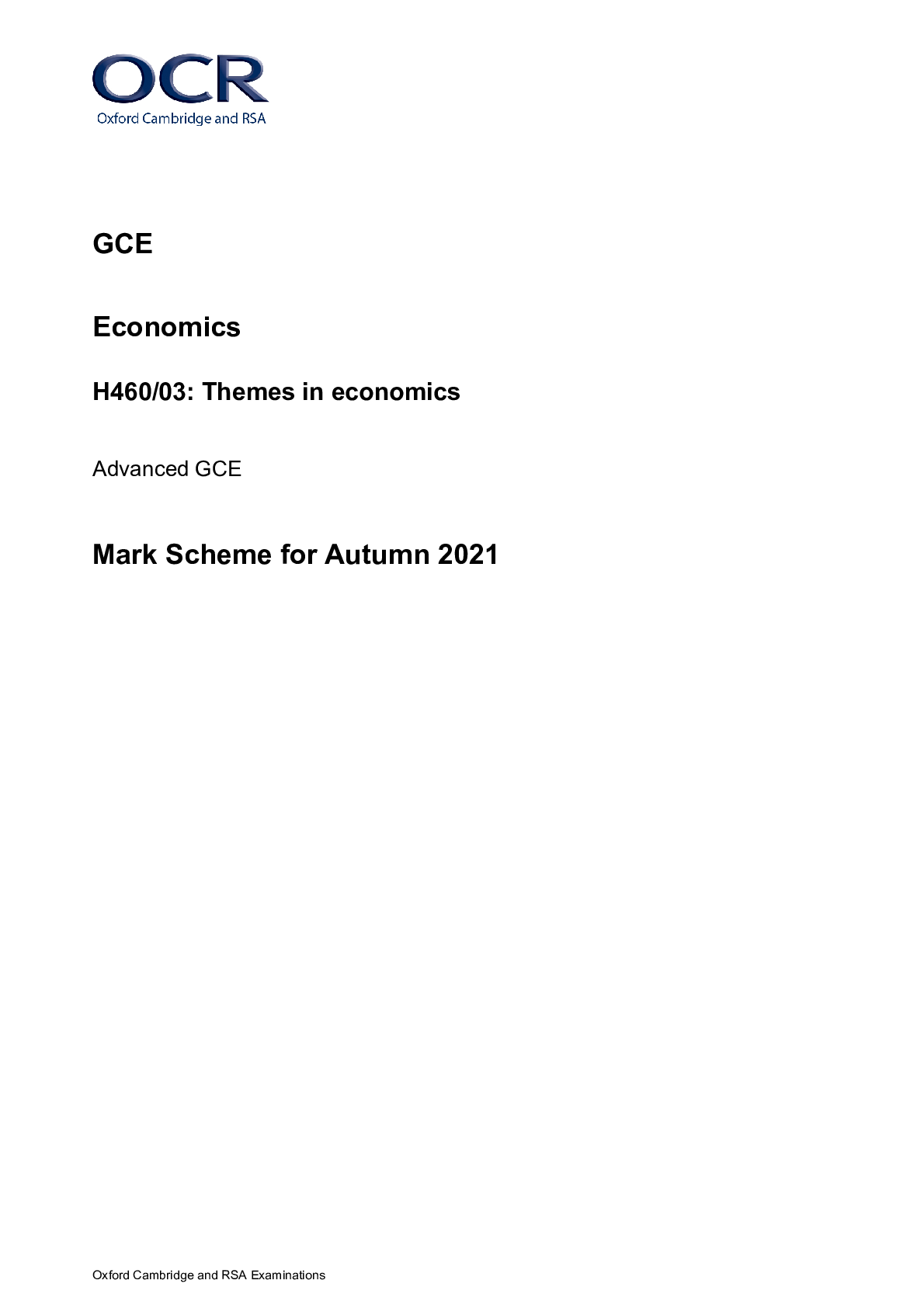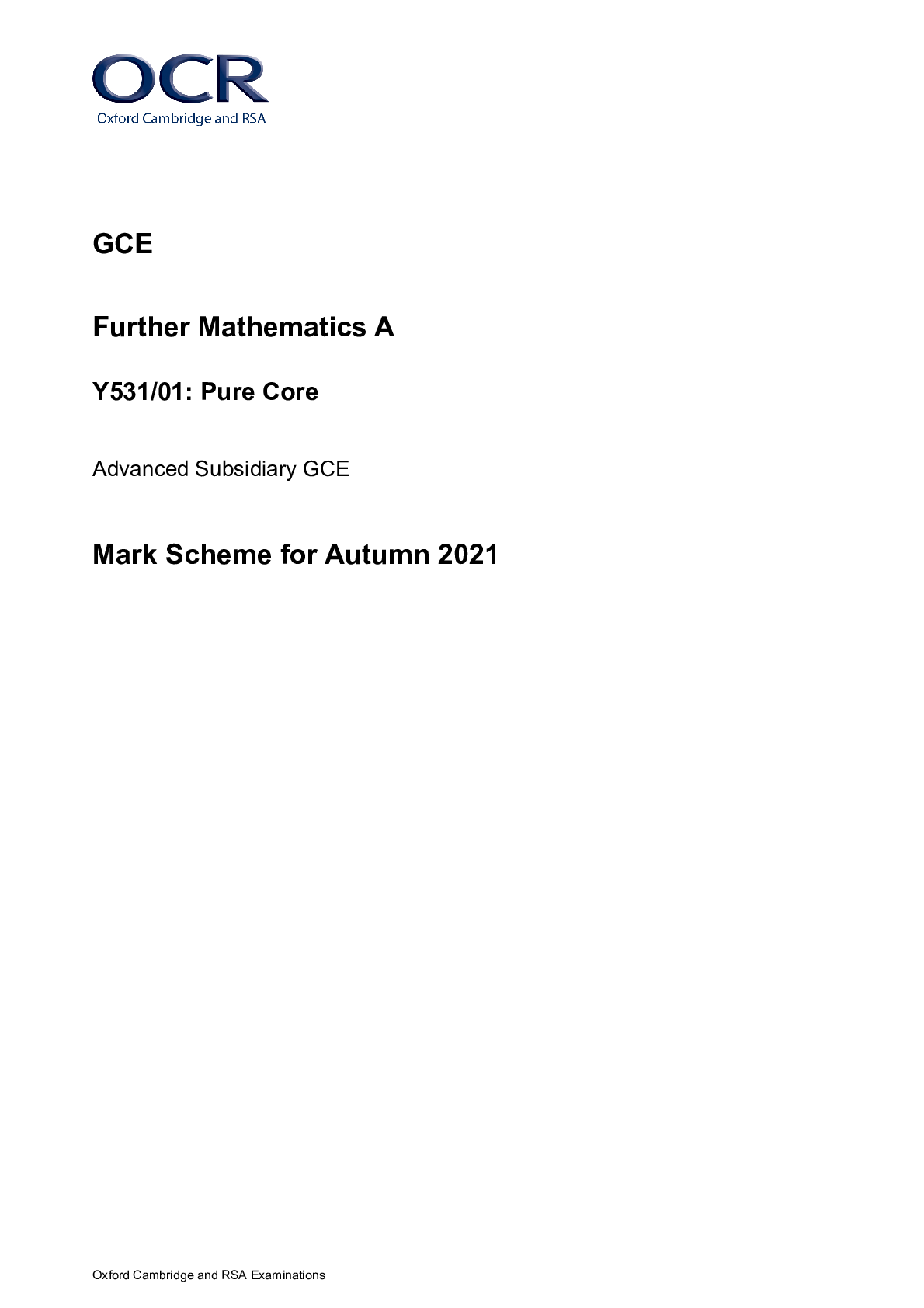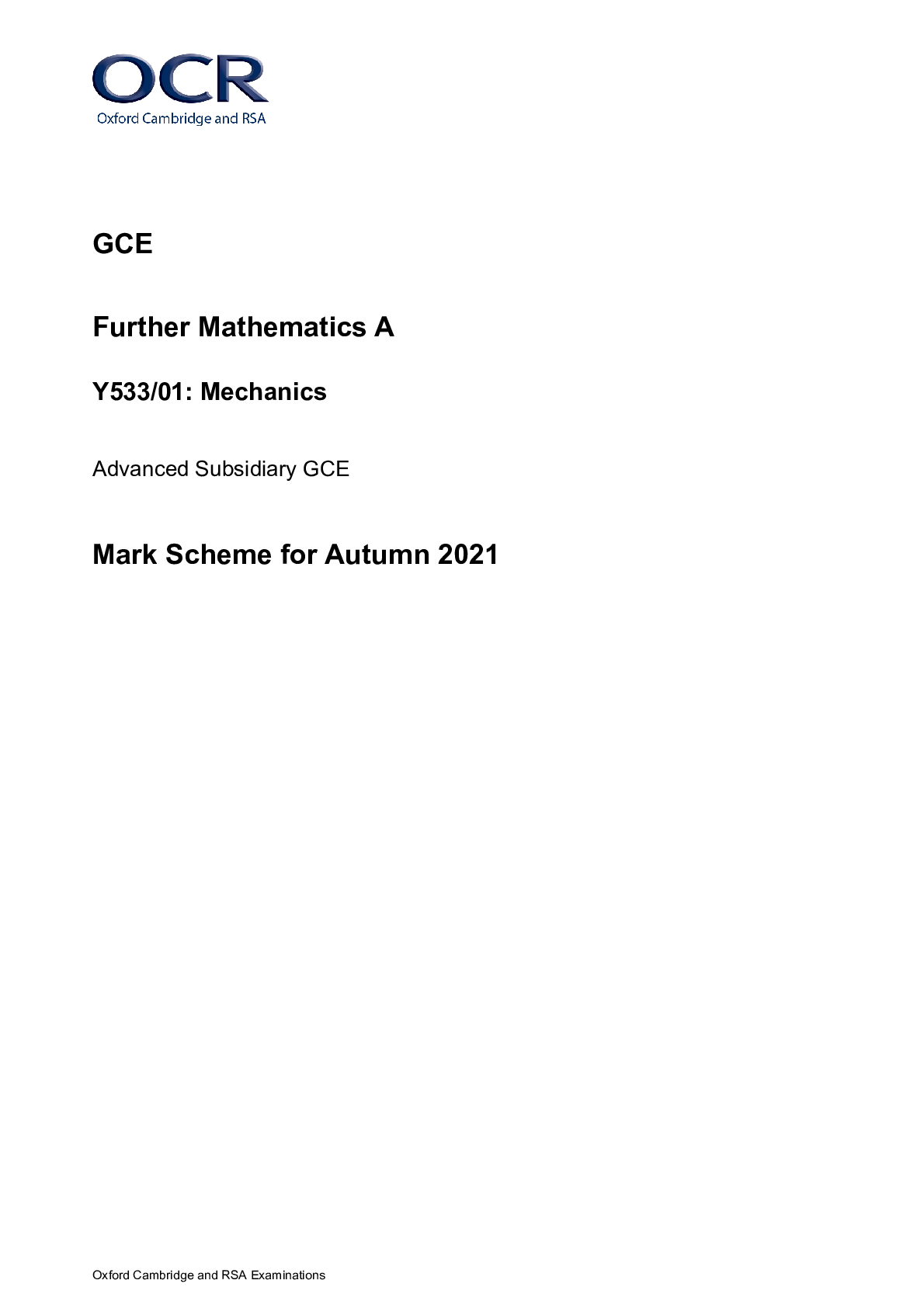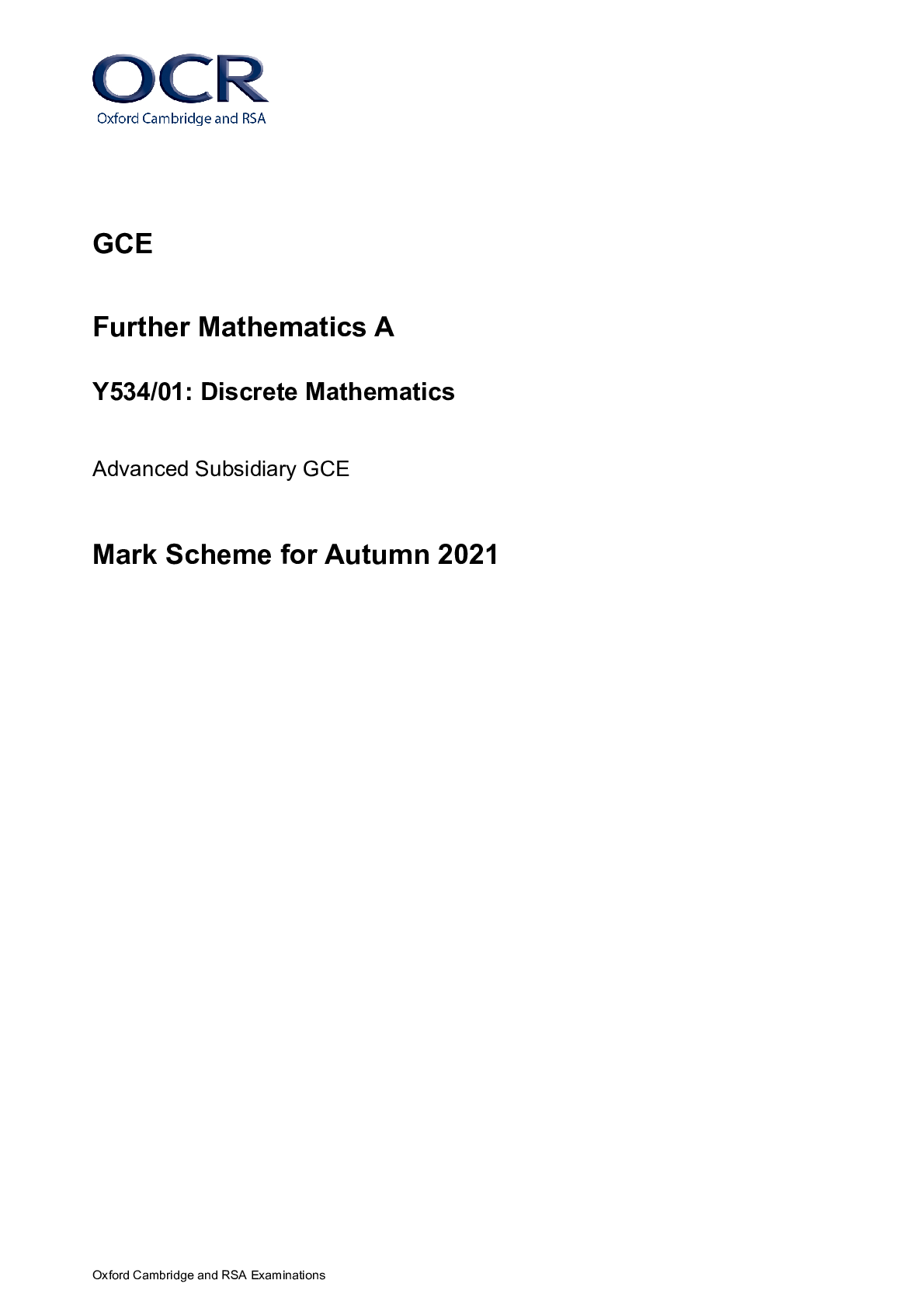Latin > MARK SCHEME > GCE Latin H443/01: Unseen translation Advanced GCE Mark Scheme for Autumn 2021 (All)
GCE Latin H443/01: Unseen translation Advanced GCE Mark Scheme for Autumn 2021
Document Content and Description Below
GCE Latin H443/01: Unseen translation Advanced GCE Mark Scheme for Autumn 2021 Oxford Cambridge and RSA Examinations GCE Latin H443/01: Unseen translation Advanced GCE Mark Scheme for Autu... mn 2021Oxford Cambridge and RSA Examinations OCR (Oxford Cambridge and RSA) is a leading UK awarding body, providing a wide range of qualifications to meet the needs of candidates of all ages and abilities. OCR qualifications include AS/A Levels, Diplomas, GCSEs, Cambridge Nationals, Cambridge Technicals, Functional Skills, Key Skills, Entry Level qualifications, NVQs and vocational qualifications in areas such as IT, business, languages, teaching/training, administration and secretarial skills. It is also responsible for developing new specifications to meet national requirements and the needs of students and teachers. OCR is a not-for-profit organisation; any surplus made is invested back into the establishment to help towards the development of qualifications and support, which keep pace with the changing needs of today’s society. This mark scheme is published as an aid to teachers and students, to indicate the requirements of the examination. It shows the basis on which marks were awarded by examiners. It does not indicate the details of the discussions which took place at an examiners’ meeting before marking commenced. All examiners are instructed that alternative correct answers and unexpected approaches in candidates’ scripts must be given marks that fairly reflect the relevant knowledge and skills demonstrated. Mark schemes should be read in conjunction with the published question papers and the report on the examination. © OCR 2021H443/01 Mark Scheme October 2021 2 1. Annotations Annotation Meaning Annotation Meaning omission incorrect Consequential or repeated error Benefit of doubt 0 mark 1 mark 2 marks 3 marks 4 marks 5 marks incorrect (scansion question) correct (scansion question) blank pageH443/01 Mark Scheme October 2021 3 12. Subject Specific Marking Instructions Guidance on applying the marking grids The general principle in assessing each section should be the proportion (out of 5) of sense achieved. One approach for each section is given. Acceptable alternatives will be illustrated during Standardisation, but examiners should assess on its own merits any approach that satisfactorily conveys the meaning of the Latin – the crucial consideration being the extent to which every Latin word is satisfactorily rendered in some way in the English. The determination of what a ‘slight’ error is only necessary when it is the only error in a translation; this distinction will then determine whether a mark of 5 or 4 is appropriate. Where marks of 4, 3, 2, 1 and 0 are applicable, the overall proportion of meaning conveyed in the section is the only consideration. The term ‘major’ error has been used here to determine an error which is more serious than a ‘slight’ error. The classification below should be seen only as a general guide, the intention of which is to maintain standards year-on-year. Lead markers should consider each instance on its own merits in the context of the passage and the section. 1. Wrong past tenses are generally considered a ‘slight’ error, but other tense errors are ‘major’. Note, however, that perfect participles can often be correctly translated as present. Note also that allowance must be made for differences of idiom (e.g. ubi venerunt: ‘when they had come’ would be correct; similarly ‘when they came’ for cum venissent). Where there are historic presents, the candidate should consistently use the past or present; if the candidate is inconsistent, the error should be counted once only, as a ‘slight’ error. If a candidate repeatedly makes the same error of tense, the error should be counted once only. 2. Vocabulary errors that are close to the right meaning are ‘slight’ errors; any wrong meaning that alters the sense is ‘major’. (e.g. amicis suasit: ‘he persuaded his friends’ would be a ‘slight’ error; ‘he spoke to his friends’ would be ‘major’). 3. Omission of particles (e.g. conjunctions) that add nothing to the sense (e.g. autem) may be ignored; those that add little to the sense (e.g. sed, tamen, igitur) are ‘slight’ errors; omission of other words is generally a ‘major’ error. All likely omissions should be categorised at Standardisation. 4. Errors of number are usually ‘major’, but where the difference is minimal, they are ‘slight’ (e.g. vinis consumptis: ‘the wine having been consumed’); sometimes they can be ignored altogether (e.g. haec dixit ‘he said this’; maximi labores ‘very great work’; curae iraeque ‘anxiety and anger’). Each instance should be categorised at Standardisation. 5. Errors of construction are always ‘major’, unless a construction has been successfully paraphrased (e.g. promisit se celeriter adventurum esse: ‘he promised a swift arrival’).H443/01 Mark Scheme October 2021 4 6. Errors of case are always ‘major’, unless the containing clause has been successfully paraphrased. (e.g. tribus cum legionibus venit: ‘he brought three legions with him’). 7. Change from active to passive is allowable if the agent is expressed or if the agent is omitted and the sense is not compromised. If the agent is omitted and the sense is compromised, it is a ‘slight’ error (e.g. regem interfecerunt: ‘the king was killed’ would be allowable if it were obvious from the preceding sentence who killed the king; if it were not clear who killed him, a ‘slight’ error should be indicated). The final decisions on what constitutes a ‘slight’ and ‘major’ error will be made and communicated to assessors via the standardisation process (after full consideration of candidates’ responses) and these decisions will be captured in the final mark scheme for examiners and centres. Marking grid Marks Description 5 Accurate translation with one slight error allowed. 4 Mostly correct 3 More than half right 2 Less than half right 1 Little recognisable meaning or relation to the Latin 0 No response or no response worthy of creditH443/01 Mark Scheme October 2021 5 Livy Answer Mark Guidance 1 (i) postero die, ubi celeriora consilia magis placuere ducibus, Etrusci armati in aciem procedunt. On the next day, when swifter plans pleased the leaders more, the Etruscans went forward armed to the battle line. 5 in aciem: ‘against the battle line’ – minor error Etrusci armati: allow ‘the Etruscan armed men’ 1 (ii) quod postquam consuli nuntiatum est, iubet ut prandeant milites firmatisque cibo viribus arma capiant. dicto paretur. When this was announced to the consul, he ordered that the soldiers should eat breakfast and, with strength bolstered by food, take up arms. His order was obeyed. 5 dicto paretur: allow ‘his words were obeyed’ (vel sim.) 1 (iii) consul ubi suos paratos vidit signa extra vallum proferri iussit et haud procul hoste instruxit aciem. When the consul saw that his men were ready he ordered the standards to be carried forward outside the rampart and drew up the battle line not far from the enemy. 5 vallum = ‘camp’ – minor error 1 (iv) aliquamdiu intenti utrimque steterunt exspectantes ut pugna inciperet, et prius sol meridie se inclinavit quam telum hinc aut illinc emissum est. For a while both sides stood still intently, waiting for battle to begin, and the sun sank from mid-day before a weapon was thrown from this side or that. 5 meridie: allow ‘at mid-day’. prius ...: ‘before the sun declined’ – major error 1 (v) inde, ne infecta re abiretur, clamor ab Etruscis oritur et signa inferuntur. nec segnius a Romanis pugna initur. Then, so that they didn’t go away with the battle unfinished, a shout rose from the Etruscans and the standards were carried forward. Battle was entered no less slowly by the Romans. 5 signa inferuntur: allow ‘they attacked’ pugna initur: ‘battle was begun’ – allow nec segnius: ‘no less promptly’ – major errorH443/01 Mark Scheme October 2021 6 1 (vi) concurrunt infensis animis; numero hostis, virtute Romanus superat; anceps proelium multos absumit. They met with hostile minds; the enemy were superior in number, the Romans in courage; the uncertain battle took away many. 5 absumit: ‘used up’ – minor error 1 (vii) ubi tamen secunda acies Romana ad primam, integri fessis, successerunt, Etrusci circa signa omnes ceciderunt. When finally a second Roman battle line went to help the first, fresh men for tired men, the Etruscans all fell around their standards. 5 ceciderunt: ‘they killed the Etruscans’ – major error (cado not caedo) 1 (viii) nullo umquam proelio fugae minus nec plus caedis fuisset, nisi Etruscos nox texisset, In no battle would there ever have been less flight or more slaughter if night had not covered the Etruscans ... 5 proelio: ‘war’ – major error. 1 (ix) ita ut victores antequam victi pugnandi finem facerent. post occasum solis ab utroque in castra reditum est. in such a way that the victors made an end to the fighting before the defeated. After sunset both sides returned to camp. 5 1 (x) ex hostium exercitu prima tota acies deleta fuerat; apud Romanos tantum vulnerum fuit ut plures post proelium decesserint quam ceciderant in acie. From the army of the enemy the whole first line had been destroyed; on the Roman side there were so many wounds that more died after the battle than fell in the battle line. 5 exercitu: major error if omitted apud Romanos: ‘the Romans were so wounded’ – single major error (too loose a translation) ceciderant: ‘had died’ – accept in acie: ‘in battle’ – allowH443/01 Mark Scheme October 2021 7 Ovid Answer Mark Guidance 2 (a)(i) detineo studiis animum falloque dolores, experior curis et dare verba meis. I occupy my mind in studies and deceive my sorrows, and I try to cheat my cares. 5 studiis: ‘with eagerness’ – minor error 2 (a)(ii) quid potius faciam desertis solus in oris, quamve malis aliam quaerere coner opem? What else am I to do, deserted on desolate shores, or what other help should I try to seek for my woes? 5 malis: allow ‘in my woes/misfortunes’ 2 (a)(iii) sive locum specto, locus est inamabilis, et quo esse nihil toto tristius orbe potest, If I look at the place, it is an unlovable place, and there can be nowhere sadder than it in the whole world, 5 sive: ‘or if’ – minor error; major error if omitted quo: ‘where’ – major error (needs to be taken as ablative of comparison) 2 (a)(iv) sive homines, vix sunt homines hoc nomine digni, quamque lupi saevae plus feritatis habent. or if I look at the men, they are scarcely men worthy of this name, and they have more savage wildness than wolves. 5 saevae – major error if wrong agreement. 2 (a)(v) non metuunt leges, sed cedit viribus aequum, victaque pugnaci iura sub ense iacent. They do not fear laws, but justice gives way to force, and laws lie defeated under the aggressive sword. 5 sub: allow ‘by’ pugnaci – major error if wrong agreement. 2 (a)(vi) pellibus et laxis arcent mala frigora bracis, oraque sunt longis horrida tecta comis. They keep out the terrible cold with animal skins and loose trousers, and their bristling faces are covered with long hair. 5 horrida: ‘horrid’ – minor errorH443/01 Mark Scheme October 2021 8 2 (a)(vii) ille ego Romanus vates (ignoscite, Musae) Sarmatico cogor plurima more loqui. I, that Roman poet (forgive me, Muses) am forced to speak most things in the Sarmatian manner. 5 vates: ‘priest’ – minor error (wrong sense here) plurima – minor error if superlative missed 2 (a)(viii) en pudet et fateor, iam desuetudine longa vix subeunt ipsi verba Latina mihi. Look, I ashamed to admit it, Latin words barely come to me myself through long disuse. 5 ipsi – minor error if omitted subeunt ... mihi: ‘are going under for me’ – major error (meaning unclear) 2 (a)(ix) nec dubito quin sint et in hoc non pauca libello barbara: non hominis culpa, sed ista loci. And I do not doubt that there are quite a few barbarisms in this little book: it is the fault of the place not the man. 5 non pauca: allow ‘more than a few’. 2 (b) – v v |– – | – v v | – – | – v v | – – nec dubito quin sint et in hoc non pauca libello – v v | – v v | – || – v v | – v v | – barbara: non hominis culpa, sed ista loci. 5 Two lines give 12 feet (assuming the long syllable before the caesura in the pentameter to be a foot). Each correct foot should be ticked and the number of ticks converted to a mark out of 5. The final syllable may be marked as anceps even if the quantity is obvious. NB A foot cannot be marked correct if the quantities are incorrect. 5 11–12 feet correct 4 9–10 feet correct 3 7–8 feet correct 2 5–6 feet correct 1 3–4 feet correct 0 0–2 feet correctOCR (Oxford Cambridge and RSA Examinations) The Triangle Building Shaftesbury Road Cambridge CB2 8EA OCR Customer Contact Centre Education and Learning Telephone: 01223 553998 Facsimile: 01223 552627 Email: [email protected] d [Show More]
Last updated: 1 year ago
Preview 1 out of 10 pages
Instant download
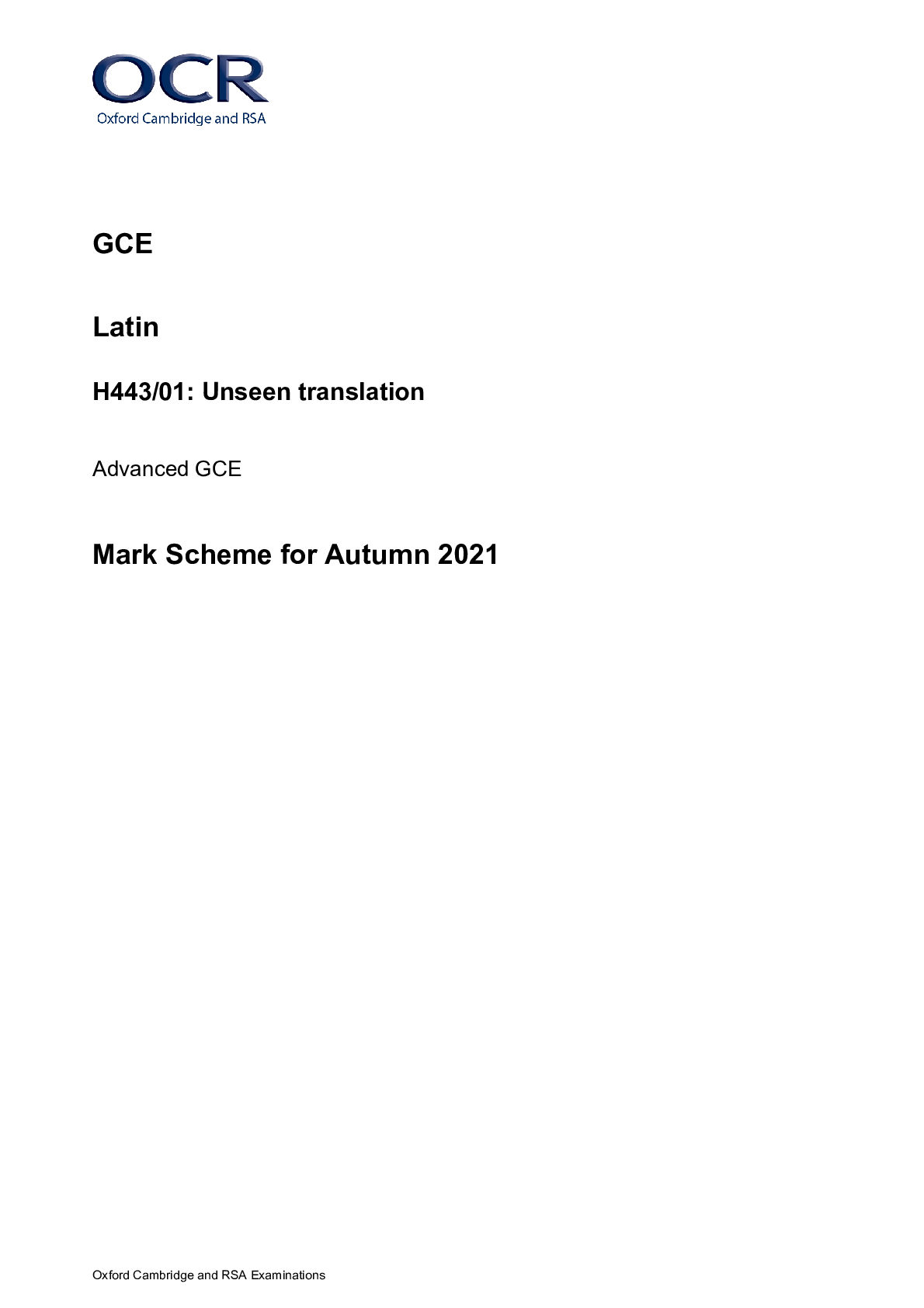
Buy this document to get the full access instantly
Instant Download Access after purchase
Add to cartInstant download
Reviews( 0 )
Document information
Connected school, study & course
About the document
Uploaded On
Oct 07, 2022
Number of pages
10
Written in
Additional information
This document has been written for:
Uploaded
Oct 07, 2022
Downloads
0
Views
54




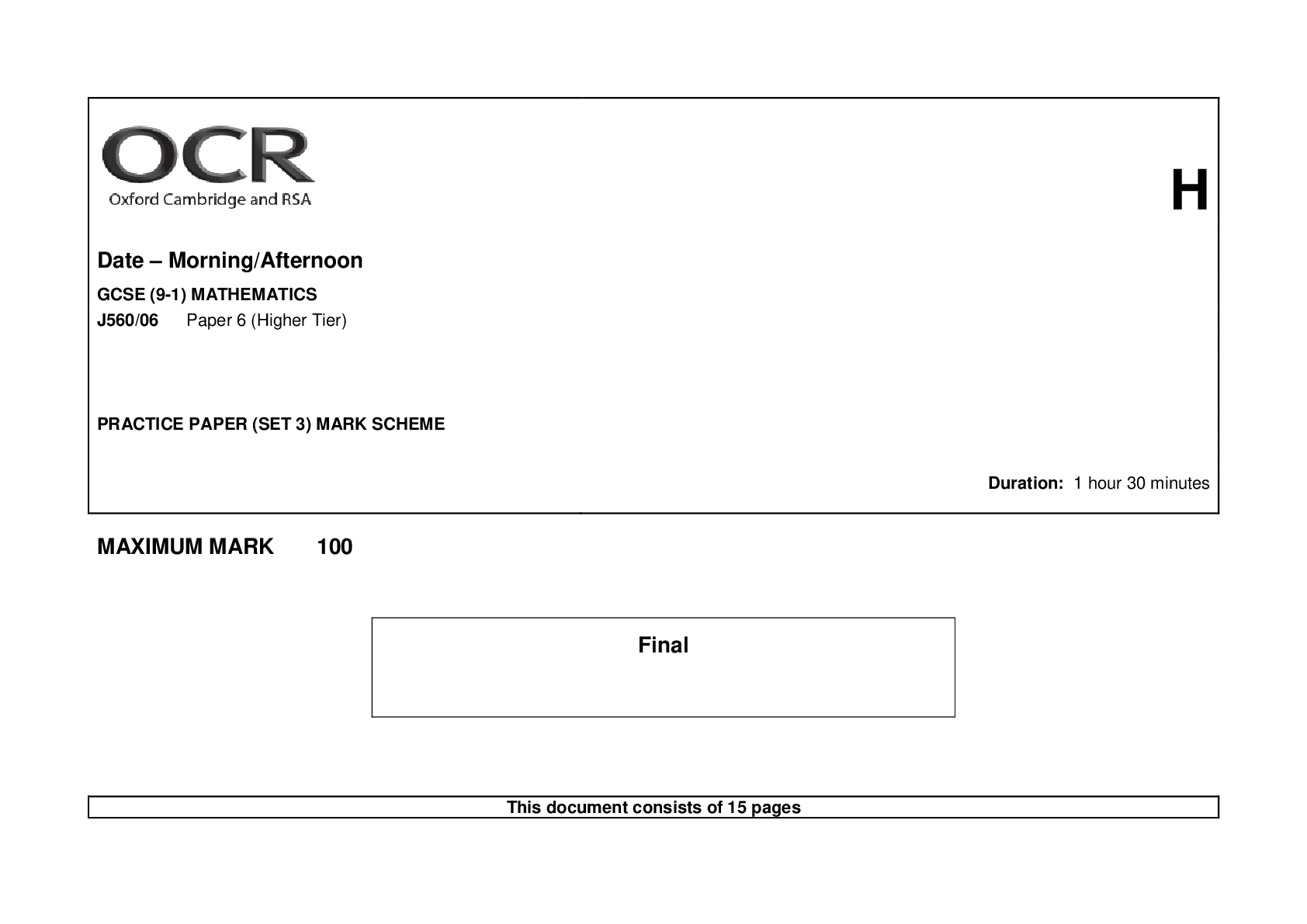
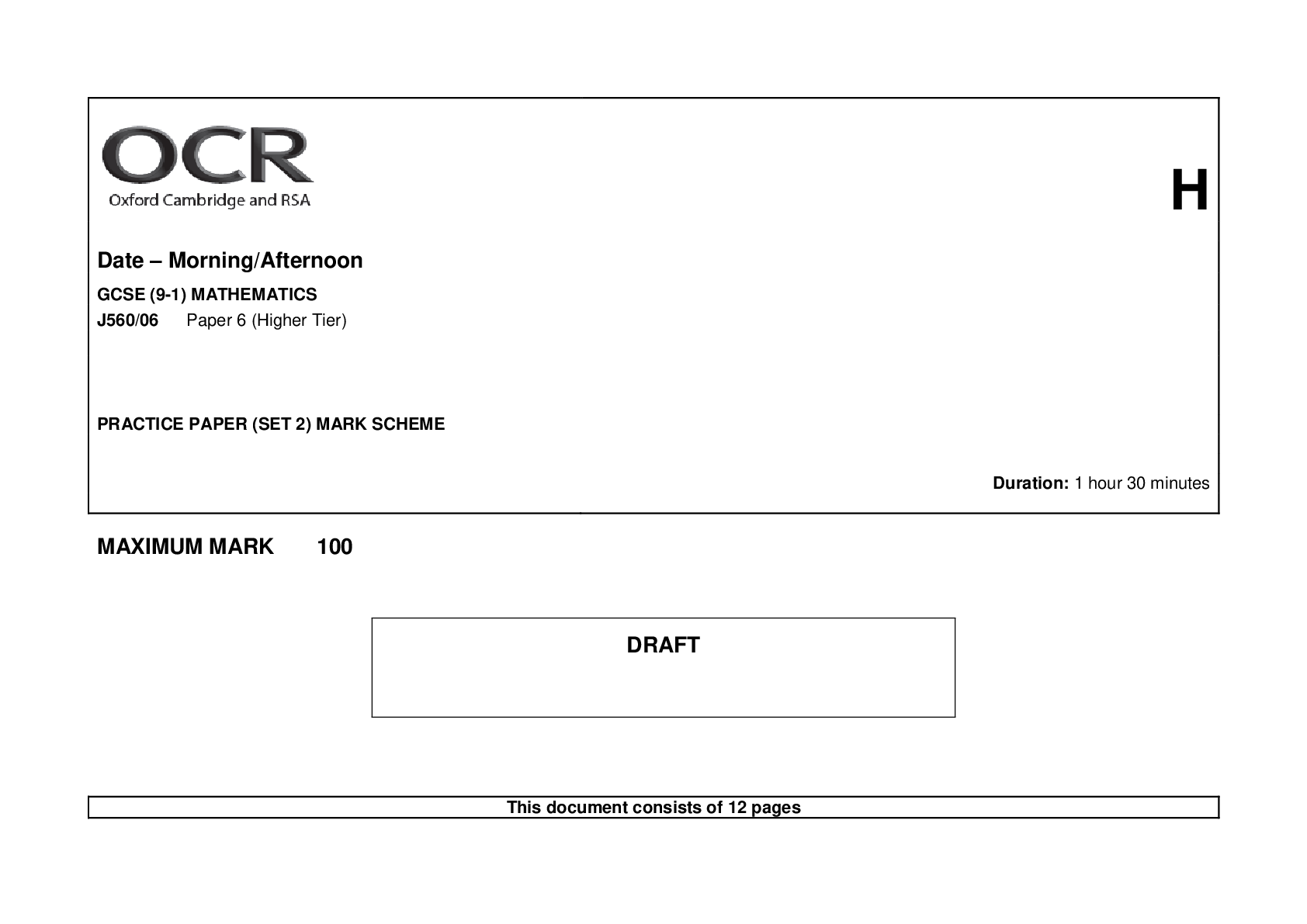
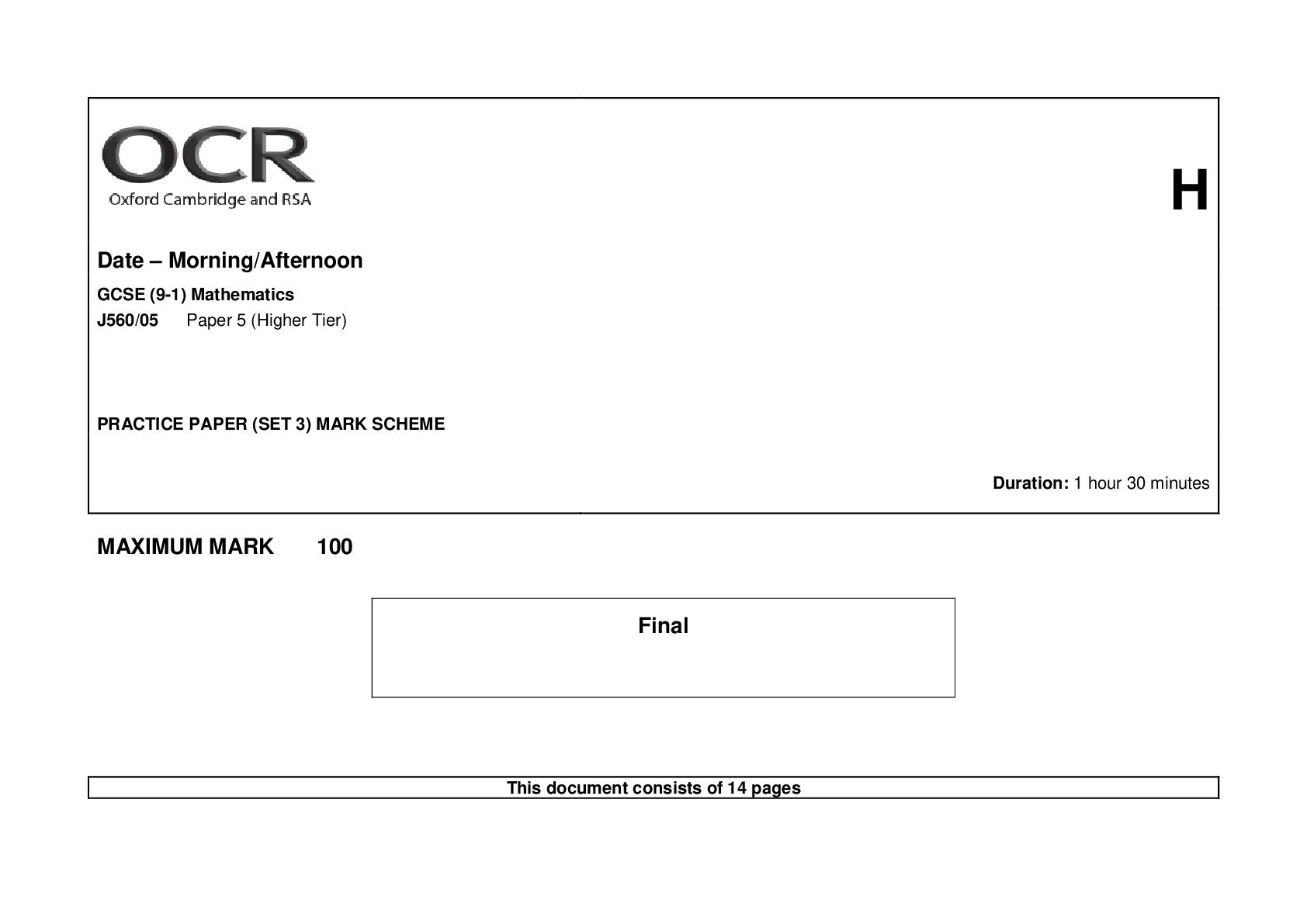
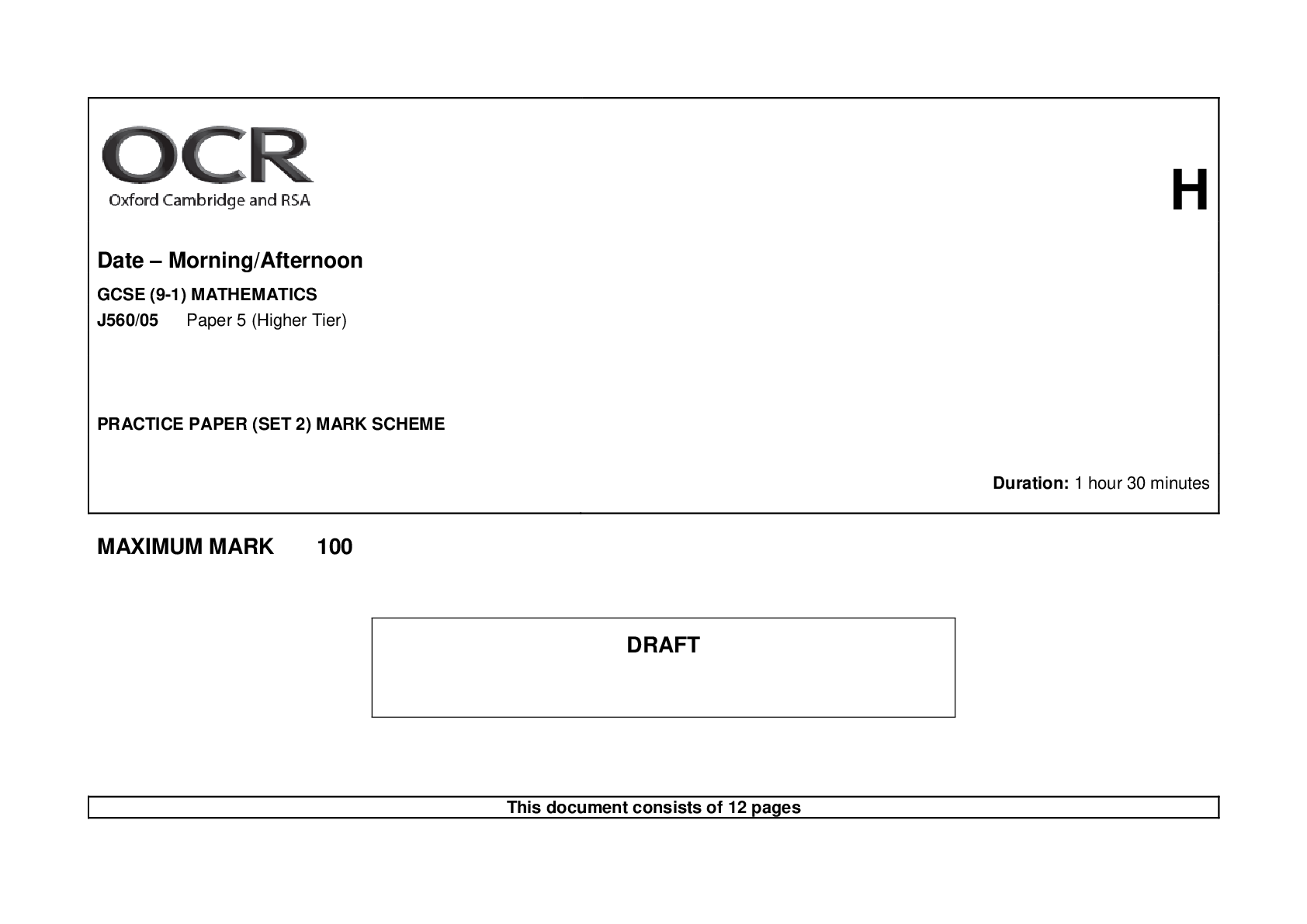




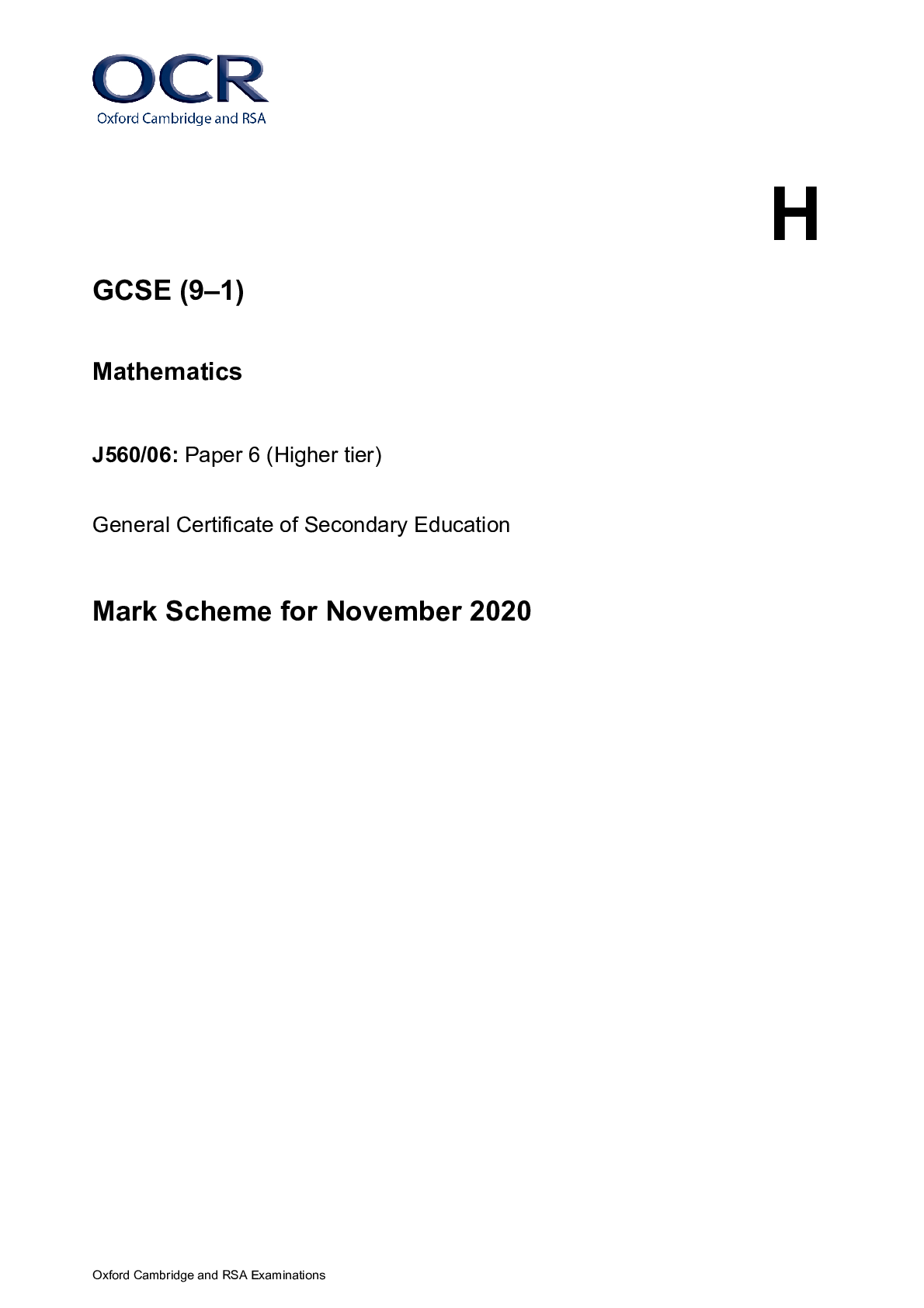
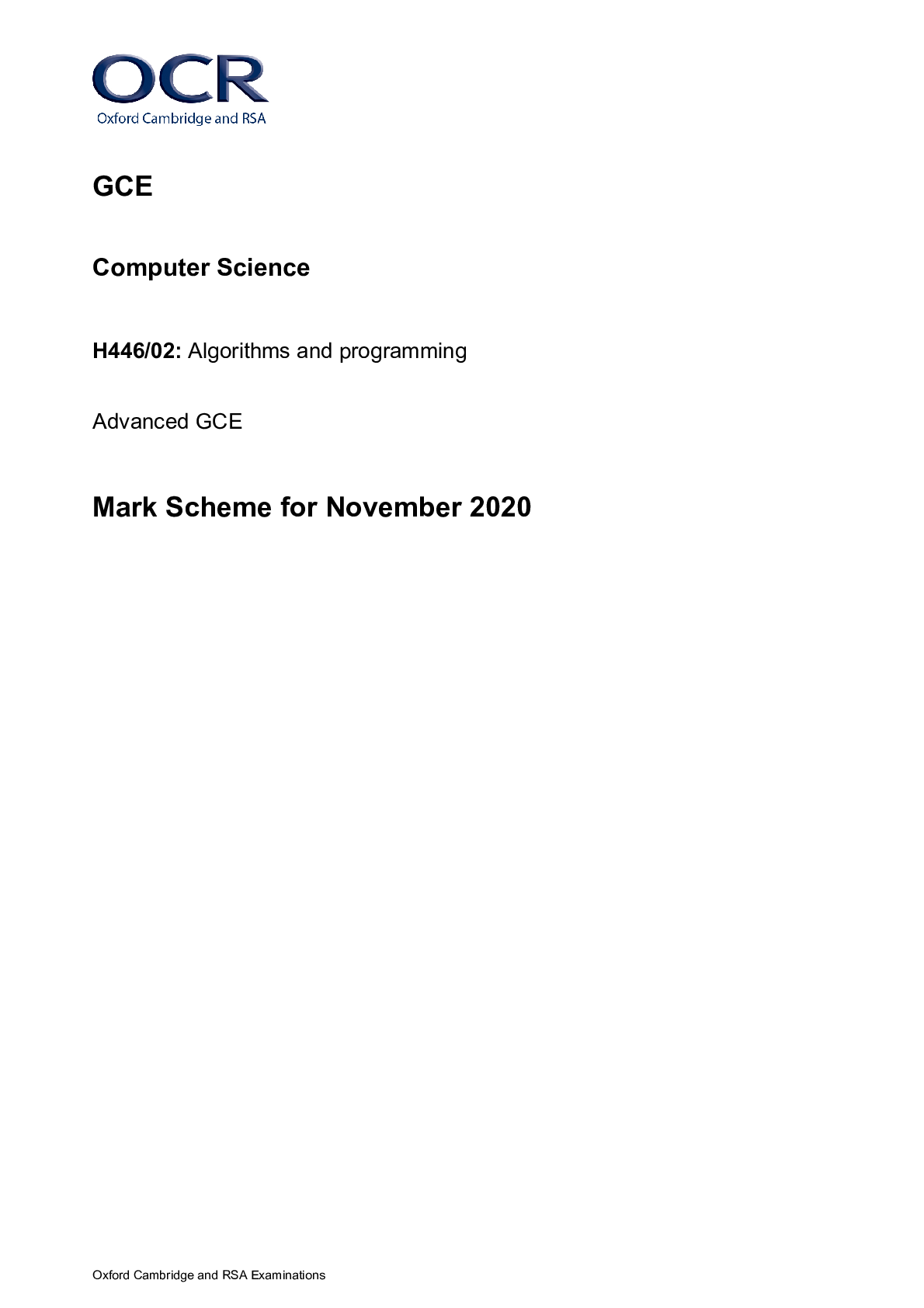
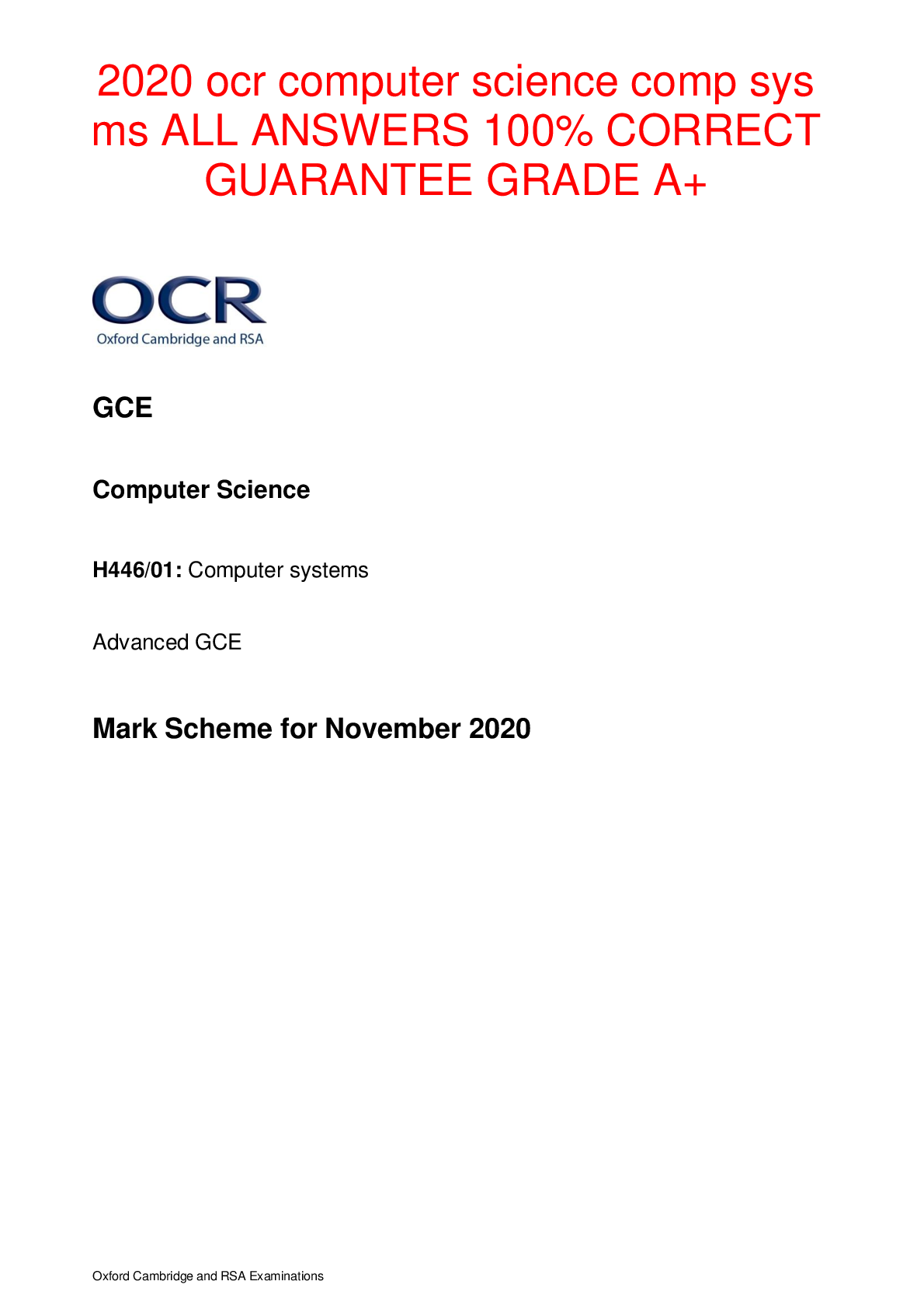

.png)


